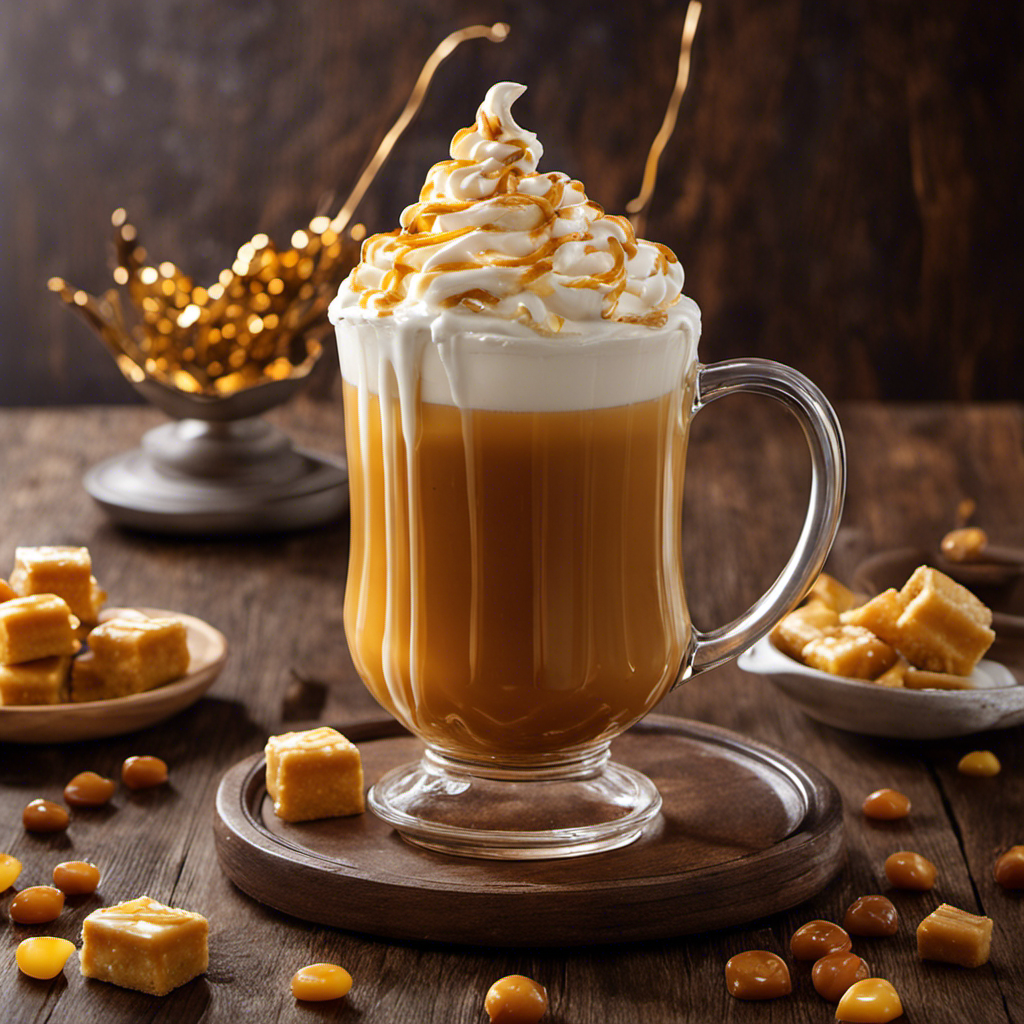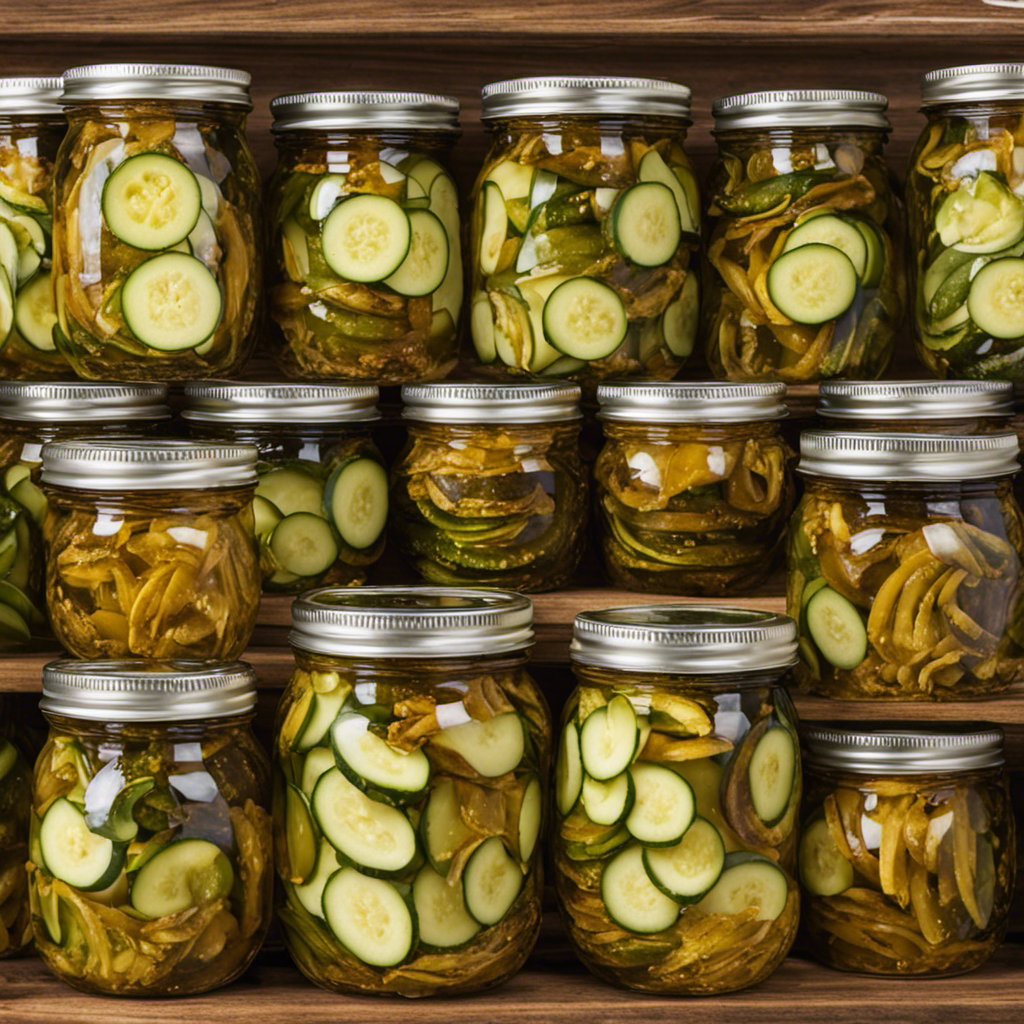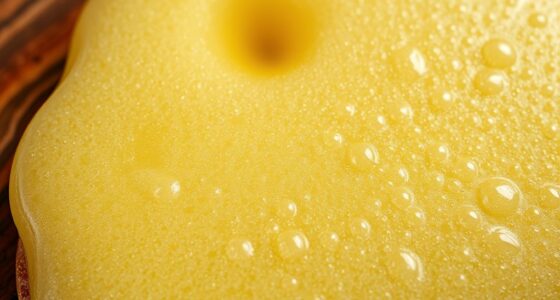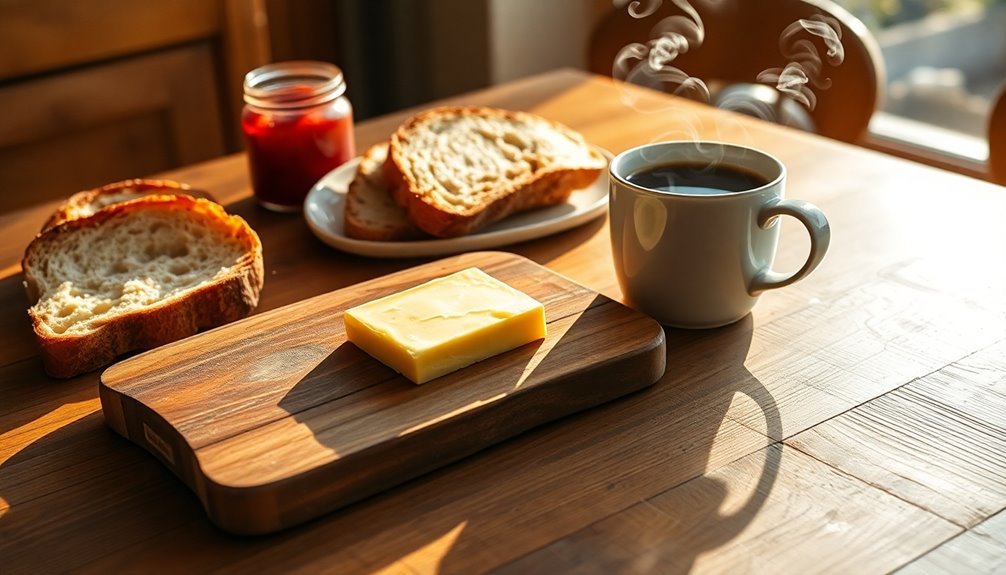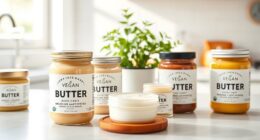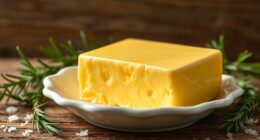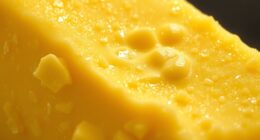If you’ve ever wondered about the cost of adding a bit of magic, get ready to be pleasantly surprised.
In this article, I’ll be delving into the enchanting world of Butter Beer and uncovering its price.
As a food and beverage writer, I’ve explored the depths of various flavors and textures, and Butter Beer holds a special place in my heart.
Join me as we unravel the mysteries of this beloved wizarding beverage and discover just how much it costs to indulge in a sip of pure enchantment.
Key Takeaways
- Butterbeer has a rich history dating back centuries and was enjoyed by both wizards and Muggles in medieval times.
- Butterbeer is made with a unique combination of cream soda, butterscotch syrup, and whipped cream.
- Butterbeer has popular variations such as Pumpkin Spice, Salted Caramel, and Chocolate Hazelnut.
- Butterbeer is reasonably priced considering its taste and nutritional value.
Historical Origins
I’ve always been curious about the historical origins of butterbeer. As a food and beverage writer, I’ve delved deep into the world of beverages, uncovering their fascinating stories and cultural significance.
Butterbeer, a beloved drink from the wizarding world of Harry Potter, has a rich history that dates back centuries. Its origins can be traced to medieval times when it was enjoyed by both wizards and Muggles alike. This delightful concoction was traditionally made by blending butter, sugar, spices, and beer, resulting in a creamy and sweet beverage with a hint of warmth and a frothy head.
Over time, butterbeer has evolved and gained popularity, finding its influence in modern beverages such as cream sodas and butterscotch-flavored treats. Its cultural significance extends beyond the fictional realm, capturing the imaginations of fans worldwide and becoming a symbol of magical indulgence.
Ingredients and Brewing Process
The recipe for this magical drink includes a unique combination of ingredients and a meticulous brewing process. Butterbeer is made with a secret recipe that has been passed down through generations.
The main ingredients include cream soda, butterscotch syrup, and a dollop of whipped cream on top. The cost of the ingredients can vary depending on where you purchase them, but overall, it’s an affordable treat that can be enjoyed by both children and adults.
The brewing process involves carefully mixing the cream soda and butterscotch syrup together, creating a sweet and creamy base. The mixture is then topped with a generous amount of whipped cream, adding a light and fluffy texture to the drink.
The end result is a delightful beverage that combines the flavors of caramel, vanilla, and cream. It’s the perfect drink to enjoy on a cozy night or during a special occasion.
Popular Variations and Flavors
Creating different variations of this magical drink is a fun way to explore new flavors and add a personal touch to the recipe. Whether you prefer a classic butter beer or want to experiment with unique twists, there are endless possibilities to satisfy your flavor preferences. Here are three popular variations that you can try at home:
| Variation | Flavor Profile | Ingredients |
|---|---|---|
| Pumpkin Spice | Warm and cozy with hints of cinnamon, nutmeg, and cloves | Pumpkin puree, spices, and vanilla extract |
| Salted Caramel | Sweet and savory with a touch of sea salt | Caramel sauce, sea salt, and butterscotch syrup |
| Chocolate Hazelnut | Rich and indulgent with a nutty undertone | Chocolate syrup, hazelnut syrup, and whipped cream |
These DIY recipes allow you to customize your butter beer to suit your taste buds. From the comforting warmth of pumpkin spice to the decadent sweetness of salted caramel, each variation offers a unique sensory experience. So go ahead and get creative with your own homemade butter beer!
Now that we’ve explored popular variations and flavors of butter beer, let’s dive into a price comparison with other wizarding beverages.
Price Comparison With Other Wizarding Beverages
When comparing prices of wizarding beverages, I found that some options can be quite costly. However, when it comes to butter beer, the price is quite reasonable considering its unique taste and nutritional value. Here is a taste comparison with other popular wizarding beverages:
-
Butter beer: A rich and creamy beverage with hints of butterscotch and vanilla. It has a smooth and velvety texture that melts in your mouth.
-
Pumpkin juice: A refreshing and slightly tart drink with a hint of sweetness. It has a vibrant orange color and a crisp, fruity flavor.
-
Gillywater: A clear and sparkling drink that’s light and refreshing. It has a subtle herbal taste with a hint of citrus.
-
Firewhiskey: A strong and fiery drink with a bold flavor and a warming sensation. It has a smoky aroma and a smooth, lingering finish.
When it comes to nutritional value, butter beer is a good source of vitamins and minerals, while also being a tasty treat.
Now that we’ve explored the price and taste of butter beer, let’s move on to where to find and purchase this enchanting beverage.
Where to Find and Purchase Butter Beer
I can easily find and buy butter beer at various wizarding locations, such as The Three Broomsticks or Honeydukes. Butter beer is a popular beverage in the wizarding world, known for its rich and creamy flavor. It’s made with a combination of ingredients, including cream, sugar, and a secret blend of spices.
The preparation method involves simmering the ingredients together until they’re well combined and the flavors have melded. The result is a warm and comforting drink that has hints of caramel and butterscotch. The texture is smooth and velvety, with a frothy foam on top. When served, the aroma of butter beer fills the air, creating an enticing experience for the senses.
In addition to the wizarding locations, butter beer recipes can also be found online, allowing fans to recreate the magical beverage at home. For those who want to take their love for butter beer to the next level, there’s also a wide range of butter beer merchandise available, including mugs, t-shirts, and even scented candles that capture the essence of this beloved drink.
Frequently Asked Questions
What Are the Health Benefits of Drinking Butter Beer?
Drinking butter beer may not offer significant health benefits. It’s important to note the potential health risks, such as high sugar content and calories. When compared to other popular drinks, butter beer tends to be richer and creamier due to its butter and cream ingredients. However, moderation is key.
Enjoying butter beer occasionally as a treat can be a delightful experience, but it’s advisable to balance it with a healthy and balanced diet.
Can Butter Beer Be Made at Home?
Sure, I can discuss making butter beer at home without using butter and the ingredients needed.
Making butter beer at home is a fun and delicious way to enjoy this magical drink. You can create a homemade version by using ingredients like cream soda, butterscotch syrup, and whipped cream.
The combination of these flavors creates a creamy and sweet beverage that’s reminiscent of the famous butter beer.
Are There Any Alcoholic Versions of Butter Beer?
There are indeed alcoholic alternatives to butter beer. While the traditional version is non-alcoholic, some specialty bars and breweries have created their own boozy versions. These alcoholic variations often incorporate ingredients like rum, vodka, or butterscotch liqueur to give it a kick.
These versions can range in taste from sweet and creamy to bold and spiced, offering a unique twist on the classic non-alcoholic option. It’s always interesting to explore the different ways people can enjoy their favorite beverages.
Can Butter Beer Be Enjoyed by People With Lactose Intolerance?
Butterbeer alternatives are available for people with lactose intolerance. There are several lactose-free drinks that can be enjoyed as a substitute for traditional butterbeer. These alternatives often use non-dairy milk, such as almond or coconut milk, instead of regular milk.
They still capture the sweet and creamy flavor profile of butterbeer, making them a delicious option for those who can’t consume dairy. These lactose-free options provide a tasty alternative for people with dietary restrictions.
Are There Any Seasonal Variations of Butter Beer Available?
As a food and beverage writer, I’m excited to share the seasonal variations of butter beer that are available.
During the holiday season, popular flavors like peppermint and cinnamon spice are added to give a festive twist to this beloved drink.
These seasonal variations bring a delightful aroma and taste that perfectly captures the spirit of the season.
Whether you’re a fan of the classic flavor or eager to try something new, the seasonal options of butter beer are sure to please.
Conclusion
In conclusion, butter beer is a unique and beloved wizarding beverage that has captivated the taste buds of fans worldwide. With its rich and creamy texture, hints of butterscotch and vanilla, and warm, comforting flavors, it truly offers a one-of-a-kind sensory experience.
While the price may vary depending on where you purchase it, the magical delight of sipping on a frothy mug of butter beer is priceless. So, whether you’re a Harry Potter enthusiast or simply curious about trying something new, don’t miss out on this enchanting treat.
